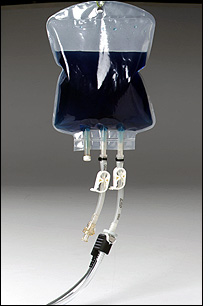Colder Products, a St. Paul, Minn., manufacturer of connectors and fittings for flexible tubing, has added RFID technology to its subminiature (SMC) couplings. The small plastic connectors are typically used on medical and surgical equipment, including blood-pressure cuffs, blood analyzers and analytical instruments.
“This is smart technology that can help ensure product and patient safety,” says Jim Brown, Colder’s medical business unit manager. “This helps to ensure that the equipment is hooked up properly, and can ensure that people aren’t reprocessing and reusing devices that are actually intended to be disposable.”
One half of the IdentiQuik SMC coupling contains a dime-sized passive 13.65 MHz RFID read-write tag. Colder has developed a process to mold the tags on the insert in a hard plastic such as polypropylene, making it chemically resistant. The other half of the coupling is used in conjunction with a panel-mountable RFID interrogator (reader).
“Our reader is one of the smallest in the industry, measuring only 1 inch by 1.25 inches,” says Brown. “The reader obtains important data from the tag and transfers it to the machine control system to ensure proper use. [Colder Products’] system can read and write prior to connection, at approximately 1.5 inches before the two coupling halves mate.”
The RFID tag contains a Phillips ICode1 chip. The tag has 64 bytes of memory, which can be encoded with a variety of data, such as expiration dates and product specifications, providing important information to ensure the medical equipment is set up and used properly. When two pieces of the connector are joined to link, for example, a blood-pressure cuff to a blood-pressure machine, the RFID reader scans the tag. If something is amiss—such as a child’s cuff being attached to a machine programmed for an adult—the error could trigger an alarm, or a message on the blood-pressure machine, or even shut the device down. “We work with customers to integrate their data and establish rules,” Brown says.
Medical equipment manufacturers can also design their equipment so nurses and doctors can program the reader to write to a tag. For example, the reader can record the date the connector was used, allowing medical staff to track when and how many times a coupling was used in a procedure.

One customer, a surgical-device maker, is currently testing the RFID-enabled SMC couplings in clinical trials, Brown says. The manufacturer wants to ensure that doctors, nurses and medical technicians properly connect up its surgical devices, and that no one connects, for example, a carbon dioxide source to a saline line. The manufacturer also wants to ensure hospitals don’t use tools that aren’t certified to work with its devices, or that have been reprocessed.
Brown says Colder is also working with dozens of other customers, mainly health-care providers and medical equipment manufacturers in various stages of testing the RFID SMC couplings. The new IdentiQuik SMC couplings with RFID have operating pressures ranging from vacuum to 100 pounds per square inch, with operating temperatures ranging from -40°F to 180°F (-40°C to 82°C) for couplings made of acetal, and 32°F to 180°F (0°C to 82°C) for polypropylene-based couplings.
In addition, Colder has also added RFID to many of its lines of other products (see RFID Protects Liquid Assets).


